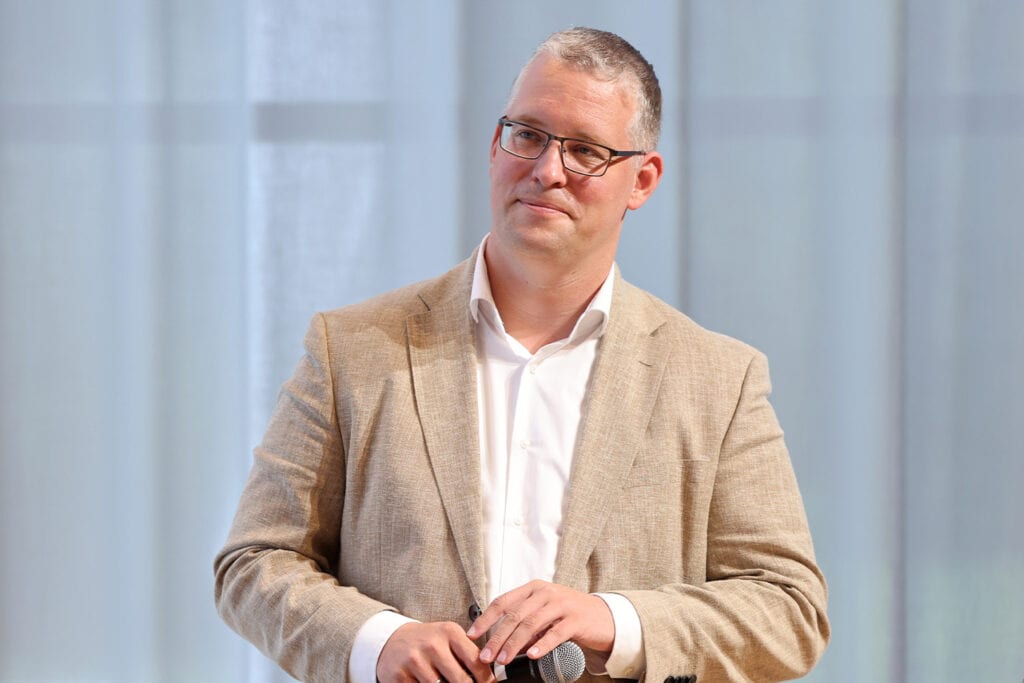
Promoting sustainable, integrated urban development in Germany
Sino-German Urbanisation Programme Keystone Papers
China / Germany
Project details
Client
Deutsche Gesellschaft für Internationale Zusammenarbeit (GIZ) GmbH (German Development Cooperation)
Duration
2018 – ongoing
Services provided by Buro Happold
Energy consulting, Environmental consultancy, Risk and resilience, Strategic planning, Sustainability
Buro Happold developed and supported ten keystone papers for GIZ’s Sino-German Urbanisation Programme on emerging issues in urbanisation and the green building sector in Germany.
In each of the ten papers, policy frameworks have been scrutinised, best practice examples presented, and an outlook on emerging trends in the respective sectors provided in order to inform discussions around these topics between German and Chinese experts.
Buro Happold developed the content, graphics, and layout, for six out of ten reports, and four were supported through technical reviews, graphics and layout. Initially available in English, the papers were later translated into Chinese. The project’s scope required a sophisticated understanding of emerging trends in both the German and international building and urban planning sector, with a focus on national policy frameworks as well as current practices. Buro Happold provided analytical and practical insights into the current discourse, with an emphasis on energy and climate related impacts, as well as experience regarding governmental finance mechanisms for urban renewal.
Our sustainability and urban renewal experts were able to provide an overview on political and regulatory frameworks in the German building and planning sector, as well as an exploration of the current challenges, our lessons learned, and prospects for the future. We were also able to integrate specific of other relevant stakeholders, such as the German Federal Ministry for the Environmental, Nature Conservation and Nuclear Safety (BMU) which is sponsoring the activities of the Sino-German Urbanisation Partnership in China.
The papers were widely shared by the client upon publication, both through their own website and through several professional channels – such as the EcoNet Monitor Special on Green Building 2019 – and drew a large audience in German, Chinese, and international networks.
About the Keystone Papers

Plus Energy Buildings and Districts
With the German building sector accounting for one third of the country’s greenhouse-gas emissions and 40% of total energy consumption, minimising emissions in the building sector therefore forms an important pillar of the German Federal Government’s climate strategy, aiming to achieve carbon-neutrality by 2050. Plus Energy Buildings lead the path towards future buildings as prosumers (producers and consumers of energy), they can be considered as intelligent, decentralised energy power plants.
This keystone paper looks at the pillars of a Plus Energy Building as well as the required legislative framework for the broad dissemination of PEBs. 3 case studies show examples of PEBs in rural as well as urban areas. Further it examines emerging trends such as the Integration of Smart Micro Grids in Plus Energy Districts and Embodied Energy and CO2-Assessments for a carbon-neutral building sector.

Energy Efficiency of Buildings & Districts in Urban Renewal
Residential buildings account for around 63% of the total primary energy consumption of the building sector. Around two thirds of them were constructed before introduction of the first regulation on energy performance in Germany. To enhance energy performance of the building sector, besides implementing high standards for new constructions, especially deep refurbishments of buildings older than 40 years need to be taken into consideration.
This keystone paper looks at Germany’s strategy for energy efficiency in the building sector, with a particular focus on the needed increase of the refurbishment rate of residential buildings to reach the government’s climate goals. It also examines Germany’s subsidy scheme for energy efficiency, which is considered as some of the most ambitious throughout the EU. Case studies show, how the strategy is being implemented and emerging trends and their effect on energy efficiency of districts and buildings are identified.

Transformative City
Cities are shaped by continuous urbanisation, increasing or shrinking population numbers, as well as other demographic changes. Cities are important economic drivers, and also responsible for a large proportion of ecological impacts and emissions. Physical transformation in urban environments mainly occurs in form of renewal, rehabilitation and upgrading.
Sustainable urban development for transforming cities depends on forward-thinking action and targeted investments to improve attractiveness and liveability. This keystone paper looks at the transformation of German cities and towns, examines the regulatory frameworks and governmental subsidy schemes underlying the transformation. It gives three best practices for urban transformation in Germany and identifies trends that will influence future urban change.

Climate Risk Management in Cities
Globally, cities account for about 70% of global greenhouse gas (GHG) emissions. Also in Germany, cities are responsible for a large proportion of the country’s carbon footprint, while being especially prone to be affected by the impacts of climate change. In urban environments, increased frequency of extreme weather events, including storms, flooding or heat waves, can have severe physical, economic and social impacts. To create climate resilient cities, therefore, municipalities need to follow a two-legged approach, taking both mitigation and adaptation measures into account.
This keystone paper examines Germany’s strategies for both, mitigation of GHG emissions in cities and their adaption to climate change. It takes a particular focus on the German adaptation strategy, and the handling of climate risk assessment and management as well as financial incentive programs in urban areas. Case studies give examples for the implementation of such strategies and trends in the climate risk management in cities are being identified.

Urban renewal in districts
Today, German cities and their communities are experiencing urban change in a variety of ways. For instance, the ongoing economic transition from an industrial towards a service economy and climate change are some contemporary drivers of urban change.
This keystone paper looks at factors of today’s urban change in Germany, the regulatory frameworks for urban renewal and the financial programmes for such. Case studies give examples for the implementation of these strategies and trends in contemporary urban renewal are being identified.
Please note that five of the ten papers are yet to be published.










